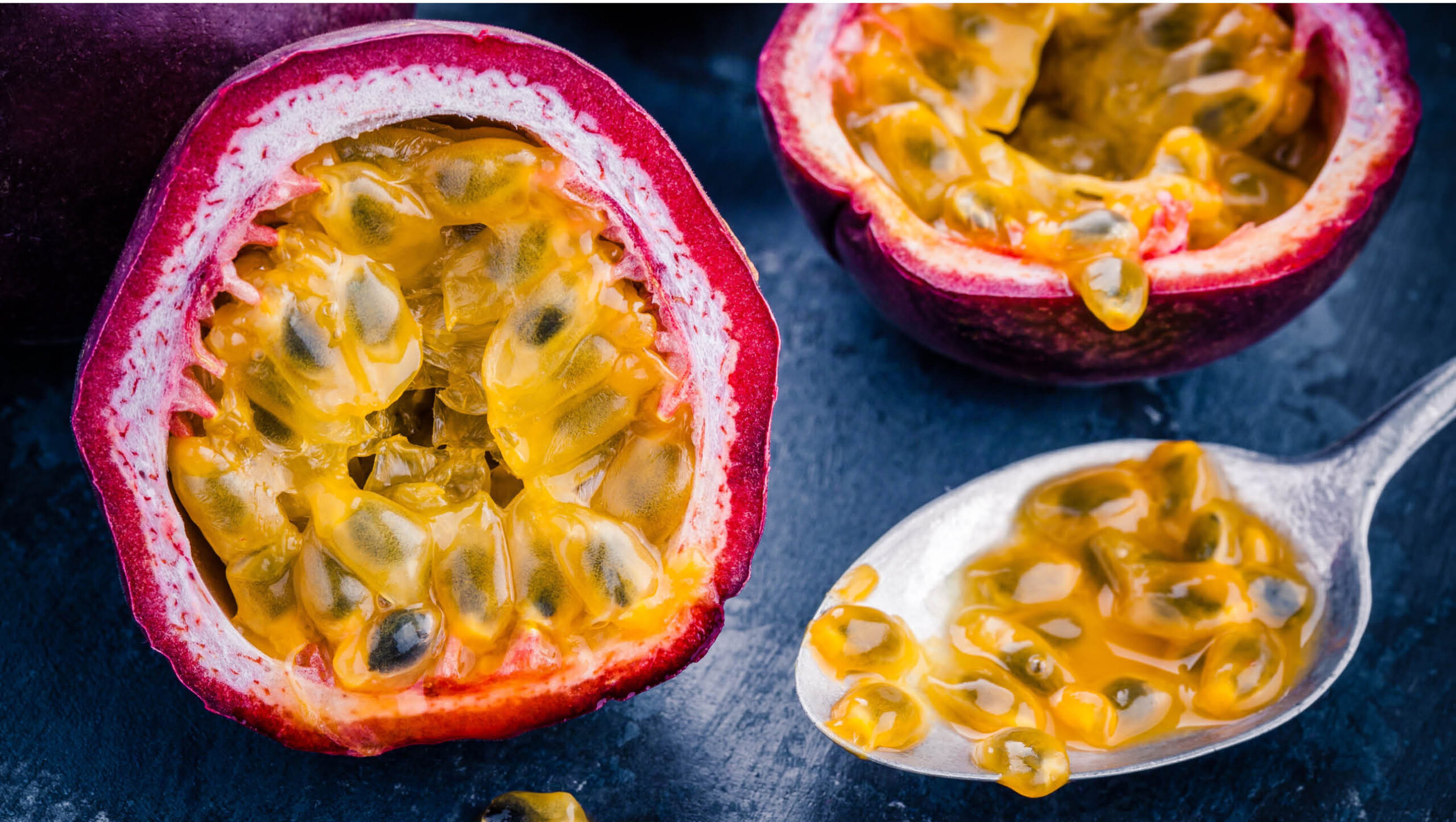Passionfruit wine
2023-10-17T13:00:01+11:00

2023-10-17T13:00:01+11:00
This award-winning wine from organic vintners, Nadia and Francis O'Connell, is a great way to use excess fruit.
According to Nadia O’Connell, owner of Firescreek winery, the process of making excellent fruit and flower wines begins with the raw product.
“Any wine is only as good as the fruit that’s used, so we are constantly ensuring that the fruits and flowers are grown using organic practices and ripened to perfection,” she says.
“To this end we let the fruit ripen on the tree or vine for maximum flavour and sugar content. After harvesting, each fruit is handled differently depending on its skin and seed type. For example peaches are individually inspected, hand seeded and then placed through a hand-rotating crusher. Oranges are finely zested, the pith removed and composted, and the remaining fruit juiced. The zest is kept and added to the winemaking for greater flavour and mouth feel. Strawberries are hand topped. Figs are one of the easiest as the whole fruit goes in, which is why we needed to control the scale before we made them into wine.”
The next steps are very similar to those used in the traditional process of making grape wine.
“The fruit is crushed and a wine yeast added, and within 24 hours fermentation begins and alcohol is being produced.
“As many fruits don’t have as high a level of sugar as grapes, fructose or sugar is added to feed the yeast, resulting in wine with an alcohol content similar to that of traditional wine.
“Our aim is to create a wine that’s delicious to drink and has a level of flavour, lushness and sweetness that’s as close to the original fruit as possible. This is why we don’t rack into oak barrels or add any oak chips or flavours.”
INGREDIENTS
2.5kg passionfruit (skins removed)
1kg fructose or finely granulated sugar 3L water
1 crushed Campden tablet (sulfur-based product used to prevent growth of mould, harmful bacteria and wild yeast)
15g pectic enzyme (helps breakdown pectin, the fleshy part of most fruits)
1tsp yeast nutrient (nourishes yeast, keeping it healthy during fermentation)
1 cup apple juice (preservative free to activate the yeast)
Lalvin (wine) yeast
METHOD
Cut passionfruit in half and scoop out pulp and add to sterilised primary demijohn (a glass or plastic vessel used in fermenting beverages).
Boil water and add to sugar, stir until dissolved and allow to cool. Add crushed Campden tablet and yeast nutrient. Add to passionfruit pulp and stir.
Cover and set aside for 12 hours. Add pectin enzyme and set aside for another 12 hours.
Warm apple juice to between 35ºC and 40ºC and add yeast. Keep at this temperature for around 20 minutes to allow yeast to activate.
Add activated yeast to demijohn and re-cover.
Stir passionfruit “must” daily for five days. During this stage fermentation will be vigorous.
“Rack” (transfer) passionfruit wine into a secondary sterilised demijohn. Ensure that the wine is transferred slowly and that the sediment is left behind.
Fit airlock and ferment to dryness. “Rack” every month until the wine becomes clear.
Bottle wine. Taste wine after around six months, however if aged for a year or more the wine will be even tastier.
Serve chilled on a warm summer’s afternoon with a platter of cheese and crackers for optimum enjoyment!
This article was first published in our November/December 2018 issue but there’s always tips and ideas in the magazine to help you make the most of your harvest. For example, you’ll find preserving tips in the Summer 2023 issue (OG 138), available here!
Grow your gardening knowledge with expert tips delivered to your inbox